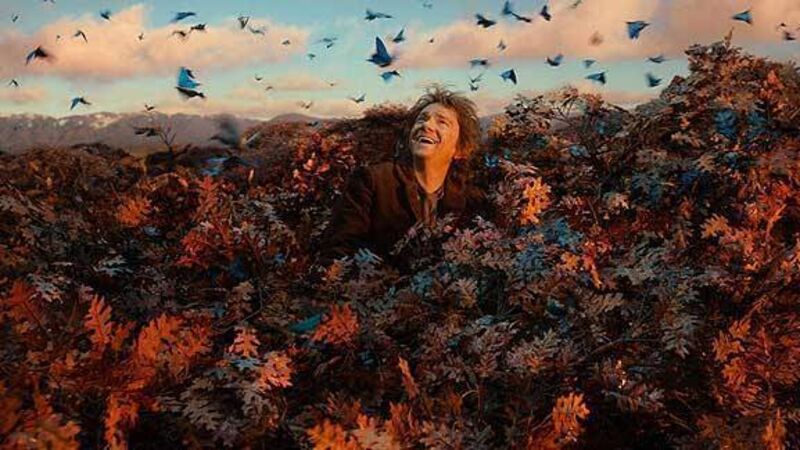Movie Reviews: The Hobbit: The Desolation of Smaug

Here be dragons. Or a single, but very impressive, dragon. picks up where The Hobbit: An Unexpected Journey (2012) left off, as a band of dwarves, led by Thorin (Richard Armitage) and assisted by the wizard Gandalf (Ian McKellen) and Bilbo Baggins (Martin Freeman), continues the quest to free its ancestral homeland, Erebor, from the tyrannical dragon, Smaug (voiced by Benedict Cumberbatch). Before they reach Erebor, the dwarves are confronted by shape-shifters, Elves and Orcs, their arduous trek a romp in which one adventurous set-piece segues into another; meanwhile, the likeable Bilbo becomes more influenced by the sinister power of the ring. Peter Jackson directs like a man outraged that boredom exists: there is running and jumping, and then more running, and limitless arrows flying, and swords clashing, and axes splitting the heads of endlessly expendable Orcs. It’s all implausible, which is why the dialogue is either exposition or the announcement of a new destination, or both. The fabulous setting, bleak landscape, and the cathedral-like interiors of lairs and castles are superbly captured and fully establish The Hobbit’s epic scale, but the story is so thin that Jackson and his co-writers split the questers into smaller bunches, and then split them again, to stretch the narrative into a rather wearying 161-minutes. The abrupt ending, which sets up the concluding part of The Hobbit trilogy, for its release next December, doesn’t help: we knew The Desolation of Smaug would be a bridging exercise, but it’s a bridge too long and yet doesn’t go quite far enough. Is it worth it for the visual impact? Yes, but just about.
“Children should be traumatised,” says Tomi Ungerer early in a documentary, written and directed by Brad Bernstein, about Ungerer, the trail-blazing author and animator of children’s books. The line sounds glib, but Ungerer places it in the context of what he considered the safe, morally bland tales (“the conspiracy against children”) that characterised children’s literature prior to the 1970s. He’s also drawing on personal experience. Born in the Alsace region of France, Ungerer experienced four years of Nazi occupation, as a young boy, which was formative in terms of his development as an artist. Now an irascible 82, the chain-smoking Ungerer looks back over a career that took him from Alsace to New York, where he became something of an enfant terrible during the 1960s and 1970s, before his adult-orientated work — a separate career in erotica — caused him to fall out of favour with the guardians of children’s books. If New York was the city he had once needed, however, it was Ireland, and West Cork, that belatedly provided him with the country his rootlessness had always craved. Tracking back and forth in time, with the narrative enlivened by Ungerer’s drawings, Far Out Isn’t Far Enough is a fascinating account of life as an artist and a political activist, not least because Ungerer is fully aware of his failings as a human being, and is self-flagellating in critical and personal appraisal of his own life.
It almost beggars belief that was released to mixed reviews and a lukewarm public reaction, in 1946, although the grim section in the middle of what is a festive offering might have had something to do with that. Jimmy Stewart plays George Bailey, a well-meaning bank manager in the small town of Bedford Falls, who makes a mistake on Christmas Eve that plunges him into despair. Thinking that the town, and his family, will be better off without him, George tries to take his own life, only to be saved by his guardian angel, Clarence (Henry Travers), who then shows George what life, and the lives of those around him, would have been like had he never been born. Directed by Frank ‘Capracorn’ Capra, the movie — and particularly the tear-jerking finale — is today rightly regarded as one of the great feel-good Christmas experiences. If you’ve never seen it on the big screen, don’t miss the opportunity.











